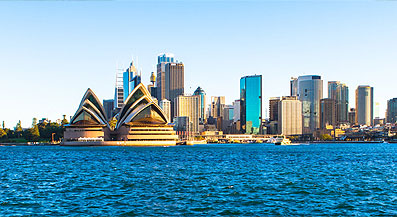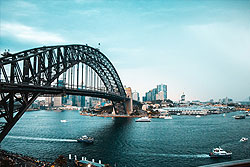NAATI Certified Translation for Kirribilli
Certified translation examples from Sydney Translation Services.
Driver License
Birth Certificate
Passport Translation
Marriage Certificate
Death Certificate
Divorce Certificate
Degree Certificate
No-Criminal Record
The Gupapuyngu Language

- Unique Phonology: Gupapuyngu, a Yolŋu Matha language of North-East Arnhem Land, features a rich phonological system with distinct sounds that are uncommon in many other languages. Translators must be attuned to the specific sounds and pronunciations to accurately convey meaning, especially when dealing with oral histories or culturally significant texts.
- Oral Tradition: Gupapuyngu is traditionally an oral language, with written forms developed more recently. As such, much of the translation work involves transcribing spoken language, which requires a deep understanding of cultural context and oral storytelling techniques.
- Contextual Sensitivity: Many words and phrases in Gupapuyngu are deeply tied to cultural practices and the local environment. Translators need to ensure that these cultural nuances are preserved in the translation, especially when dealing with ceremonial or traditional knowledge, where mistranslation could lead to significant misinterpretations.
- Translating Legal and Educational Documents: Gupapuyngu is increasingly used in legal and educational contexts, especially in the Northern Territory. Translators working on these types of documents need to ensure that the correct legal and academic terminology is employed, respecting both the traditional language structure and the specific requirements of official communication.
About Kirribilli
 Kirribilli is a suburb of Sydney, in the state of New South Wales, Australia. One of the city's most established and affluent neighbourhoods, it is located three kilometres north of the Sydney central business district, in the local government area administered by North Sydney Council. Kirribilli is a harbourside suburb, sitting on the Lower North Shore of Sydney Harbour. The name Kirribilli is derived from an Aboriginal word Kiarabilli, which means 'good fishing spot'. The suburb initially formed in the vicinity of Jeffrey Street and was subsequently part of a grant to James Milson (1785-1872), after whom Milsons Point was named. The area was largely covered in native bush. As the decades passed, the land was cleared bit by bit and sub-divided, first for the construction of large family residences during the 1840s, secondly for the erection of Victorian terrace houses from the 1860s onwards, and finally for 20th-Century flats. Prominent early landowners in Kirribilli included members of the Campbell, Jeffrey and Gibbes families. Colonel John George Nathaniel Gibbes (1787-1873), the Collector of Customs for New South Wales, built 'Wotonga' - the forerunner of Admiralty House - in 1842-43 on a 5-acre (20,000 m2) site which he leased, and then purchased, from the Campbells. Gibbes' son, William John Gibbes, lived nearby in Beulah House during the 1840s. Beulah was later lived in by the Riley and Lasseter families. Eventually, the house was demolished and its grounds subdivided into numerous residential blocks which were put up for public auction in 1905.
Kirribilli is a suburb of Sydney, in the state of New South Wales, Australia. One of the city's most established and affluent neighbourhoods, it is located three kilometres north of the Sydney central business district, in the local government area administered by North Sydney Council. Kirribilli is a harbourside suburb, sitting on the Lower North Shore of Sydney Harbour. The name Kirribilli is derived from an Aboriginal word Kiarabilli, which means 'good fishing spot'. The suburb initially formed in the vicinity of Jeffrey Street and was subsequently part of a grant to James Milson (1785-1872), after whom Milsons Point was named. The area was largely covered in native bush. As the decades passed, the land was cleared bit by bit and sub-divided, first for the construction of large family residences during the 1840s, secondly for the erection of Victorian terrace houses from the 1860s onwards, and finally for 20th-Century flats. Prominent early landowners in Kirribilli included members of the Campbell, Jeffrey and Gibbes families. Colonel John George Nathaniel Gibbes (1787-1873), the Collector of Customs for New South Wales, built 'Wotonga' - the forerunner of Admiralty House - in 1842-43 on a 5-acre (20,000 m2) site which he leased, and then purchased, from the Campbells. Gibbes' son, William John Gibbes, lived nearby in Beulah House during the 1840s. Beulah was later lived in by the Riley and Lasseter families. Eventually, the house was demolished and its grounds subdivided into numerous residential blocks which were put up for public auction in 1905.
Other Gupapuyngu Translation Service Locations
Kingsford Gupapuyngu Translator, Kingsgrove Gupapuyngu Translator, Kingswood Gupapuyngu Translator, Kogarah Gupapuyngu Translator, Ku-ring-gai Chase Gupapuyngu Translator, La Perouse Gupapuyngu Translator.




 Kirribilli is a suburb of Sydney, in the state of New South Wales, Australia. One of the city's most established and affluent neighbourhoods, it is located three kilometres north of the Sydney central business district, in the local government area administered by North Sydney Council. Kirribilli is a harbourside suburb, sitting on the Lower North Shore of Sydney Harbour. The name Kirribilli is derived from an Aboriginal word Kiarabilli, which means 'good fishing spot'. The suburb initially formed in the vicinity of Jeffrey Street and was subsequently part of a grant to James Milson (1785-1872), after whom Milsons Point was named. The area was largely covered in native bush. As the decades passed, the land was cleared bit by bit and sub-divided, first for the construction of large family residences during the 1840s, secondly for the erection of Victorian terrace houses from the 1860s onwards, and finally for 20th-Century flats. Prominent early landowners in Kirribilli included members of the Campbell, Jeffrey and Gibbes families. Colonel John George Nathaniel Gibbes (1787-1873), the Collector of Customs for New South Wales, built 'Wotonga' - the forerunner of Admiralty House - in 1842-43 on a 5-acre (20,000 m2) site which he leased, and then purchased, from the Campbells. Gibbes' son, William John Gibbes, lived nearby in Beulah House during the 1840s. Beulah was later lived in by the Riley and Lasseter families. Eventually, the house was demolished and its grounds subdivided into numerous residential blocks which were put up for public auction in 1905.
Kirribilli is a suburb of Sydney, in the state of New South Wales, Australia. One of the city's most established and affluent neighbourhoods, it is located three kilometres north of the Sydney central business district, in the local government area administered by North Sydney Council. Kirribilli is a harbourside suburb, sitting on the Lower North Shore of Sydney Harbour. The name Kirribilli is derived from an Aboriginal word Kiarabilli, which means 'good fishing spot'. The suburb initially formed in the vicinity of Jeffrey Street and was subsequently part of a grant to James Milson (1785-1872), after whom Milsons Point was named. The area was largely covered in native bush. As the decades passed, the land was cleared bit by bit and sub-divided, first for the construction of large family residences during the 1840s, secondly for the erection of Victorian terrace houses from the 1860s onwards, and finally for 20th-Century flats. Prominent early landowners in Kirribilli included members of the Campbell, Jeffrey and Gibbes families. Colonel John George Nathaniel Gibbes (1787-1873), the Collector of Customs for New South Wales, built 'Wotonga' - the forerunner of Admiralty House - in 1842-43 on a 5-acre (20,000 m2) site which he leased, and then purchased, from the Campbells. Gibbes' son, William John Gibbes, lived nearby in Beulah House during the 1840s. Beulah was later lived in by the Riley and Lasseter families. Eventually, the house was demolished and its grounds subdivided into numerous residential blocks which were put up for public auction in 1905.